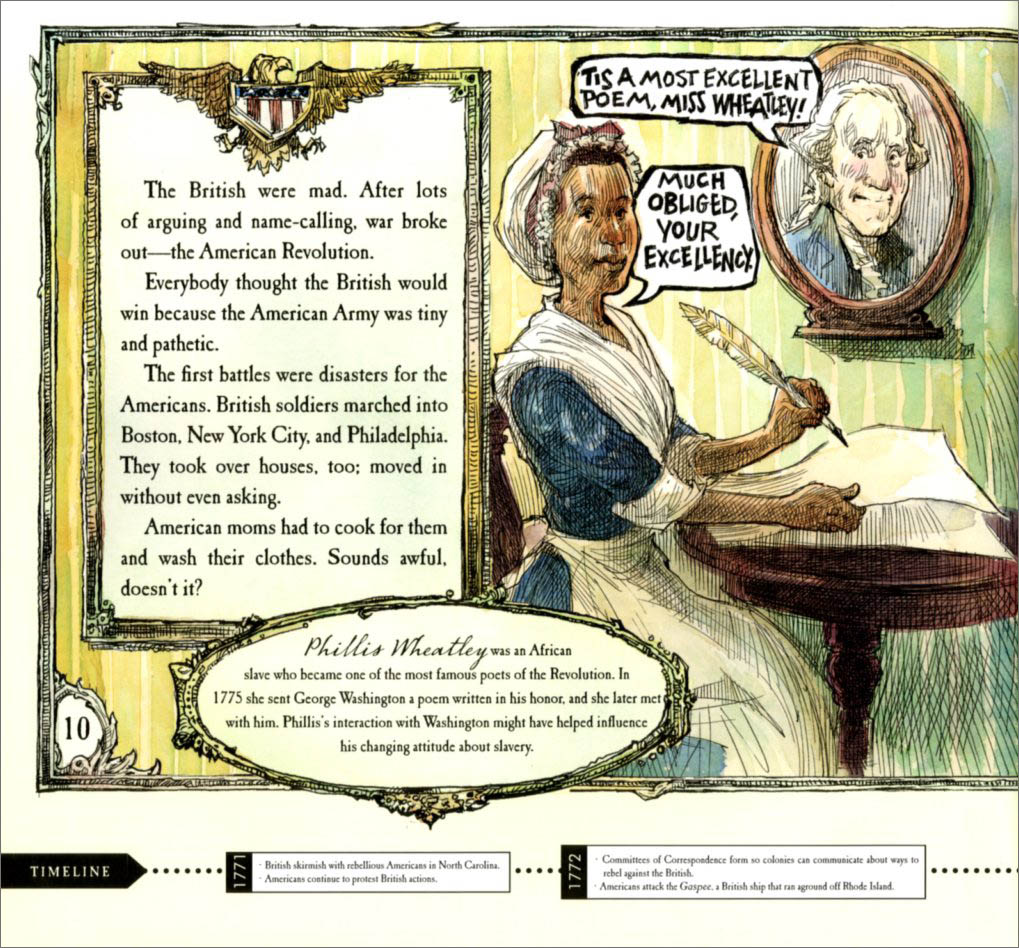
March has been designated Women’s History month. Fortunately, in the last two decades we have been given scores of books that promote the role of women in history. For some great suggestions you can consult the Amelia Bloomer list compiled by the American Library Association.
Today I’d like to focus on one of the exceptional books in this area, Laurie Halse Anderson’s Independent Dames. Anderson is one of those writers who may already have created several classic books. Her young adult novel Speak has found a devoted audience. Her historical fiction for ten- to fourteen-year-olds, Fever 1793 and Chains, has been brought into the curriculum across the country. And her picture book for six- to ten-year-olds, Independent Dames, published in 2008 and illustrated by Matt Faulkner, presents a stirring portrait of the women who made America possible.
Beginning with the scene of a school play about the Founding Fathers, Anderson declares that if we look only at them we are missing half of the story. Then she begins with small vignettes of some of our heroines. Sybil Ludington rode longer than Paul Revere and didn’t get caught! The Daughters of Liberty make an appearance, along with nine-year-old Susan Boudinot who protested at a tea party of the Royal Governor. Writers (Phyllis Wheatley), soldiers (Deborah Sampson), spies, scouts, nurses, and the wives of the patriots all get their due via a small fact and portrait.
Having written myself about the women of the Civil War (I’ll Pass for Your Comrade), I can’t help but appreciate how brilliantly Anderson has overcome one of the great problems of women’s history. In many cases, we know very little about each person because comprehensive records were not kept about women. Because Anderson uses only one or two arresting facts for each woman, she keeps the text lively and encourages young readers to find out more.
At the bottom of each picture Anderson includes a timeline of events and defines some of the terms, making the book even more information rich. At the end of the forty-page book, she adds material on other women and a great bibliography. This short text lends itself to all kinds of activities or acts simply as a supplement for more traditional texts. Anderson’s research is thorough and her understanding of young readers, as always, is profound. When I conducted an informal poll of school librarians and teachers, Independent Dames emerged as their favorite book for Women’s History Month. Writing with passion and humor, Laurie Halse Anderson is on a mission to set the record straight. And she does!
